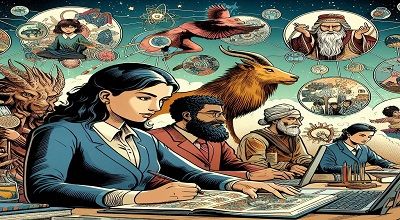Utilizing graphic novels in middle school education
Utilizing graphic novels in middle school education has become increasingly popular and recognized as an effective tool for engaging students and promoting literacy. Here are some of the latest trends and practices in this area:
- Diverse Representation: There is a growing emphasis on including graphic novels that feature diverse characters and perspectives. Educators are seeking out titles that reflect the experiences of marginalized groups, such as people of color, LGBTQ+ individuals, and those with disabilities, to promote empathy and understanding among students.
- Integration into Curriculum: Graphic novels are being integrated into various subject areas, including English/language arts, social studies, science, and even math. Educators are using them to teach literary concepts, historical events, scientific concepts, and more, providing students with a multi-modal approach to learning.
- Critical Analysis Skills: Teachers are incorporating graphic novels into lessons that focus on critical thinking and analysis. Students are encouraged to analyze visual storytelling techniques, such as panel layout, color symbolism, and character expressions, in addition to traditional literary elements like plot, characterization, and theme.
- Digital Resources and Platforms: With the increasing availability of digital resources and platforms, educators have access to a wide range of graphic novels and related teaching materials online. Platforms like ComiXology, Epic!, and TeachingBooks.net offer curated collections of graphic novels for educators, along with lesson plans, discussion guides, and other supplementary materials.
More here…
- Author Visits and Workshops: Many middle schools are inviting graphic novel authors. Illustrators to speak with students and conduct workshops. These interactions provide students with insights into the creative process behind graphic novels. Inspire them to explore their own storytelling abilities through visual mediums.
- Cross-Curricular Projects: Educators are encouraging interdisciplinary projects that combine graphic novels with other forms of media and expression. Such as writing, art, music, and digital media production. These projects allow students to demonstrate their understanding of content while also honing their creative and technical skills.
- Literacy Promotion and Inclusion: Graphic novels are being used to reach reluctant readers and English language learners. As the visual format can help scaffold comprehension and language acquisition. Educators are leveraging graphic novels to create inclusive learning environments where all students can feel represented and engaged.
- Professional Development Opportunities: School districts are providing professional development opportunities for teachers to learn. How to effectively incorporate graphic novels into their curriculum. Workshops, conferences, and online courses cover topics such as selecting appropriate titles, designing engaging lessons, and assessing student learning outcomes.
Final Words
Overall, the use of graphic novels in middle school education continues to evolve. Educators find innovative ways to harness the unique benefits of this medium to support student learning. Engagement across a variety of subjects and learning styles.
